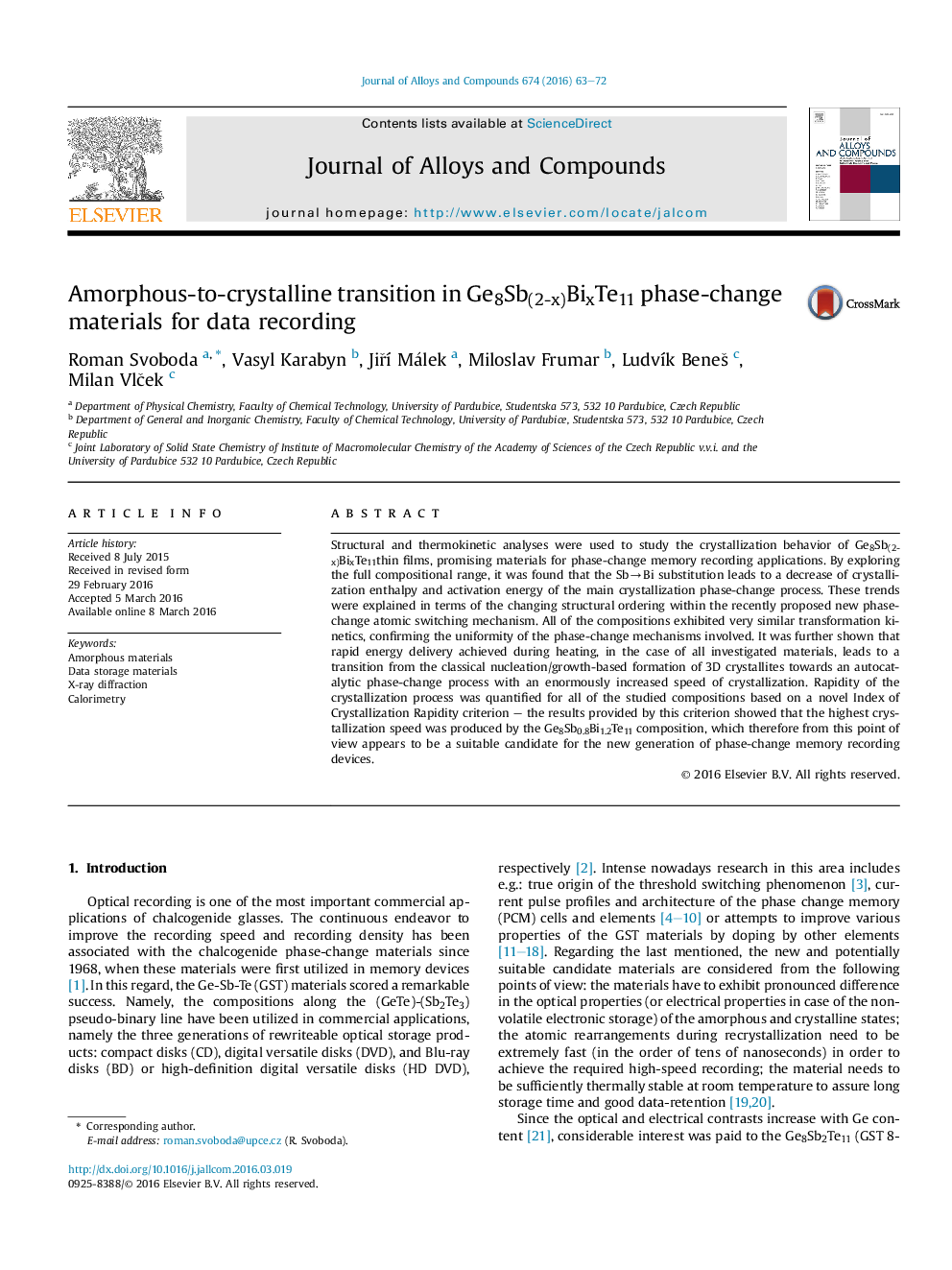| Article ID | Journal | Published Year | Pages | File Type |
|---|---|---|---|---|
| 1605932 | Journal of Alloys and Compounds | 2016 | 10 Pages |
•Crystallization behavior of Ge8Sb(2-x)BixTe11 thin films was studied by DSC.•Sb → Bi substitution leads to a decrease of crystallization enthalpy and activation energy.•All compositions exhibited very similar transformation kinetics.•Rapidity of the crystallization process was quantified for the studied compositions.•Highest crystallization speed was produced by the Ge8Sb0.8Bi1.2Te11 composition.
Structural and thermokinetic analyses were used to study the crystallization behavior of Ge8Sb(2-x)BixTe11thin films, promising materials for phase-change memory recording applications. By exploring the full compositional range, it was found that the Sb→Bi substitution leads to a decrease of crystallization enthalpy and activation energy of the main crystallization phase-change process. These trends were explained in terms of the changing structural ordering within the recently proposed new phase-change atomic switching mechanism. All of the compositions exhibited very similar transformation kinetics, confirming the uniformity of the phase-change mechanisms involved. It was further shown that rapid energy delivery achieved during heating, in the case of all investigated materials, leads to a transition from the classical nucleation/growth-based formation of 3D crystallites towards an autocatalytic phase-change process with an enormously increased speed of crystallization. Rapidity of the crystallization process was quantified for all of the studied compositions based on a novel Index of Crystallization Rapidity criterion – the results provided by this criterion showed that the highest crystallization speed was produced by the Ge8Sb0.8Bi1.2Te11 composition, which therefore from this point of view appears to be a suitable candidate for the new generation of phase-change memory recording devices.
